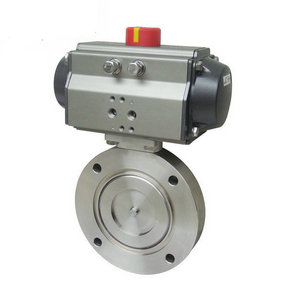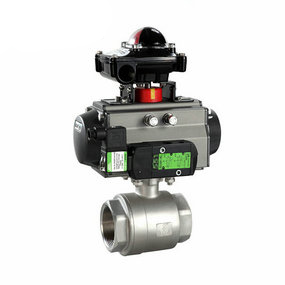How to adjust the leakage of pneumatic quick cut-off butterfly valve? 2. Welding and analysis welding test shall be conducted by cylinder, material A105. Its main purpose is to test, verify and determine the valve body raw materials, welding wire diameter, welding flux brand, optimize the welding groove structure and welding parameters, predict and control the temperature change, deformation and welding residual stress during welding, and provide reference for the production design of all welded pneumatic ball valve. The welding test system consists of current and voltage measurement system, displacement and deformation measurement system and temperature measurement system.
1) The temperature shall be determined at the side during welding. According to the temperature measurement results (as shown in Figure 1), when welding pneumatic ball valves, the control interlayer temperature shall not exceed the safe use temperature of the seat sealing ring by 150 ℃, which will not affect the valve sealing performance. Fig. 1 Temperature Change Curve at 25mm from the Weld Center
2) Determination of welding deformation. Cylinders with inner diameter of 600mm and thickness of about 50mm shall be welded. There is no binding at both ends of the cylinder during welding. After welding, the measured cylinder deformation is about 2.5mm in axial direction and 1.5mm in radial direction. During the design of all welded pneumatic ball valve, the influence of welding deformation on the sealing performance of the pneumatic ball valve shall be considered, and the fit clearance between the valve seat and the valve body shall be properly adjusted. Different auxiliary methods such as air cooling and vibration can be used during welding to improve the deformation of workpiece during welding. In general, vibration welding has less deformation, followed by air cooling.
3) Determination of welding residual stress. After welding, the welding residual stress shall be measured by the through hole method. The distribution curve of welding residual stress is shown in Figure 2.

Pneumatic ball valve can be divided into O-type ball valve and V-type ball valve. The O-type ball valve is of floating structure, the ball core is precision casting, the surface is plated with hard chrome, the valve seat is made of reinforced polytetrafluoroethylene material, the flow port is the same as the pipe diameter, the flow capacity is great, the flow resistance is very small, and there is no leakage when closing. It is generally used as an on-off valve, especially suitable for high viscosity V-type ball valves. The V-type ball valve is of fixed structure, and the ball core is provided with a V-type notch, It can shear fiber and granular media.




